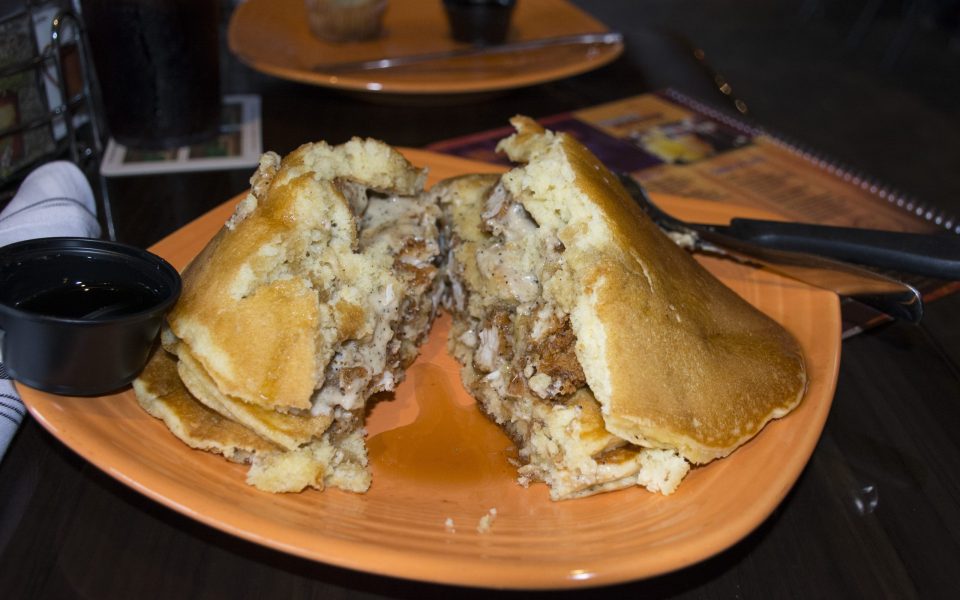 I love food. There, I said it.
I love food. There, I said it.
In 2012, at 41 years young, I had triple-bypass heart surgery. And, it turns out that it was not the food that I had been eating that precipitated it. It was, mostly, genetics and sleep apnea. But I did realize I hadn’t been doing myself any favors with my food choices.
Once an eater of fast food three times a day, seven days a week, I radically changed my diet. That meant eating at better restaurants, but less frequently, and more eating at home.
I did not like to eat at home.
I like going out, trying new and unusual foods and that wonderful feeling of being served, at a table, with whatever I ask for. But it all had to change, at least in frequency.
Today, I have not had fast food in four years. And I no longer dread sitting around my own table at home.
If I am going to eat at home, I want restaurant-quality food. So I started to cook it myself, sidestepping the boring “journey” stuff and going right for the cuisine. I gained a passion for cooking and eating really good food that I could make at home. It is now a team effort between my wife, my 15-year-old son and me.
We are like a home version of a kitchen line in a restaurant. It gives us time together as a family, and it allows us to control everything we eat.[pullquote]Once an eater of fast food three times a day, seven days a week, I radically changed my diet.[/pullquote]
These days I have to monitor my intake of sodium. Many foods are “diet” or “healthy” but they only measure that in terms of cholesterol and fat. Sodium is the real villain here. In that, we have turned to alternative methods and substitution in our search for healthier, yet very flavorful cooking options.
I love Asian food, but those dishes are notoriously high in sodium. Soy sauce, even the low-sodium alternative, is not very low sodium at all. Fish sauce? Forget about it. I have found that whenever a recipe involves soy sauce, we substitute with low-sodium, and then use just half the amount the recipe calls for, substituting Worcestershire sauce for the other half. Worcestershire and soy sauce have the same basic savory profile, what the Japanese call “umami.” However, a tbsp of Worcestershire has only 195 mg of sodium compared to the low-sodium soy at 533 mg. Also, I prefer the flavor of Worcestershire. Most of the time.
I have found there is no substitute for salt. Americans love salty foods and I am just that sort of American. I have tried to wean myself from salty delights but it is almost impossible to escape them completely. And does one really want to?
Salt does have its benefits. And sodium is not salt. Salt is sodium. Using it in moderation, as is the case with just about anything, is the idea. I use salt in my recipes and I make sure to pull back on whatever the recipe calls for. You can always add the salt later; do not screw up your whole dish by throwing in too much during the cooking process; there is no turning back.
Recently, my son and I made a Mongolian beef and spring-onion dish. Instead of a quarter-cup of soy sauce, we pared that down to less than a quarter-cup low-sodium and quarter-cup of Worcestershire plus a little extra. We did not miss the salt flavor at all. The savory umami was present but the salty overtones were tamed. It was healthier and the sodium wasn’t a factor. In fact, I thought the flavors were perfect.
Small substitutions can make all the difference.
Tim Beeman has been eating his way through Winston-Salem since 1998. Read about his exploits at the Man Who Ate the Town blog and podcast (), part of the Less Desirables Network. Don’t ask him if you can have any of his fries.
Join the First Amendment Society, a membership that goes directly to funding TCB‘s newsroom.
We believe that reporting can save the world.
The TCB First Amendment Society recognizes the vital role of a free, unfettered press with a bundling of local experiences designed to build community, and unique engagements with our newsroom that will help you understand, and shape, local journalism’s critical role in uplifting the people in our cities.
All revenue goes directly into the newsroom as reporters’ salaries and freelance commissions.


Leave a Reply